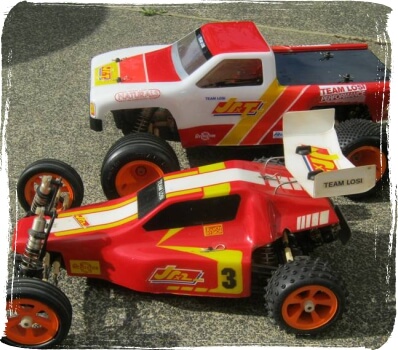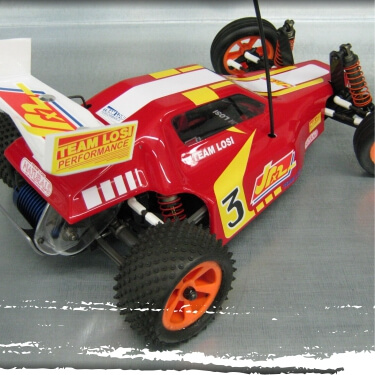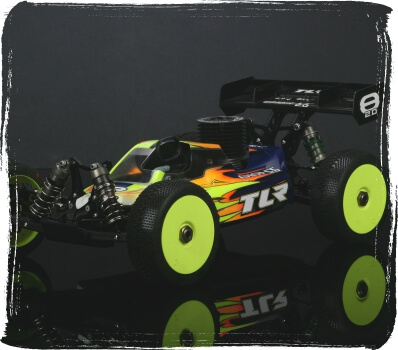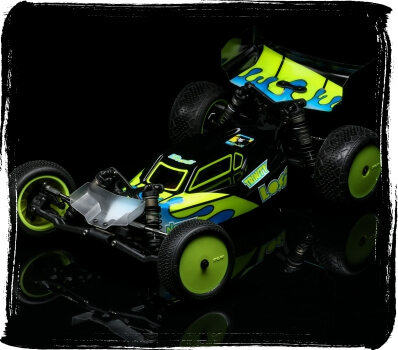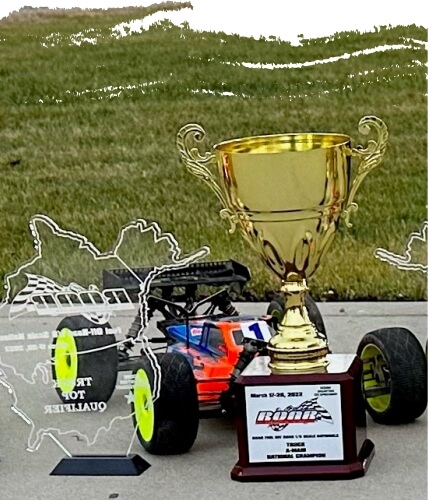Innovation — and more than a little resourcefulness — defined the very first Team Losi RC
buggy, the groundbreaking JRX2. The JRX2 project began in 1985 with hand-drawn prototype
parts. Gil Jr. learned production machining at a local machine shop in order to make the
axles, turnbuckles, and ballstuds himself. "I don't want to hear that it can't be done,"
Pops instructed his team. "I want to hear how you're going to get it done."
Four years later, the Team Losi JRX2 Buggy emerged as the first 2WD off-road RC car that came properly equipped for racing right out of the box. Highlights included a graphite plate chassis and 5-link rear suspension. With its dramatically new design, the JRX2 soon turned the 2WD category into RC racing's most popular and prestigious class.
And it was only the beginning. Team Losi innovation continued in the next decade with the XX, another new 2WD RC buggy platform with a tunnel-shaped, molded chassis plus steering and suspension improvements. Driven by Brian Kinwald, the XX debuted at the 1993 IFMAR Worlds in Basildon, England, and won Team Losi its first World Championship.
Team Losi, soon to be Team Losi Racing, and Kinwald teamed up again to introduce the XXX RC buggy at the 1999 ROAR Nationals. This one had a new transmission and was the first Team Losi Racing 2WD RC car to move the front shocks behind the camber links. The result? No contest. Another win for Team Losi!
After Pops Losi sold his company to Horizon Hobby at the turn of the century, the racing breakthroughs kept on coming. Team Losi Racing launched a 1/8 scale nitro off-road project in 2002. Rejecting the category status quo, Team Losi Racing aimed to do it better with radical changes that required four years of hard work. When Team Losi Racing unveiled the 1/8 scale 8IGHT platform with its narrow diff in 2006, the new nitro buggy immediately began winning major championships all over the world. Just like the JRX2 had done for 1/10 scale 2WD electric RC buggies, the 8IGHT changed 1/8 scale for all RC manufacturers moving forward.
When Team Losi Racing and Losi separated into two distinct brands, the focus of Losi shifted to developing products inspired by full-scale racing. TLR remained dedicated solely to producing exceptional vehicles for RC racing.
Team Losi Racing ushered in this new era with the TLR 22 platform used for RC buggies and RC trucks in 2011. In development for two years, the 22 marked the first complete redesign of a 1/10 scale 2WD TLR racing platform since the XXX, taking full advantage of envelope-pushing LiPo electric and brushless power.
Of course, the 22 came loaded with "firsts." It was built on the first TLR aluminum chassis plate. The RC racing kit could be assembled with either a 3-gear, rear-motor or 4-gear, mid-motor transmission. New hard-anodized, big-bore, bladder-compensated shocks came standard
Dominating at the ROAR Nationals that year, the TLR 22 1/10 scale RC racing platform again changed all the rules and reignited 1/10 scale electric racing throughout the world.
Today, the TLR engineering headquarters remains in southern California — the world's center of RC racing — where it all started over four decades ago. Our record of wins at hard-fought national and international championships remains as strong as ever — proof that you can expect nothing less than optimum RC racing performance from any TLR branded product.
